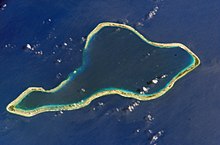
The foreign relations of New Zealand are oriented chiefly toward developed democratic nations and emerging Pacific Island economies. Until the late 20th century, New Zealand aligned itself strongly with the United Kingdom and had few bilateral relationships with other countries. From the latter half of the 20th century, Australia has been New Zealand's most important cultural, economic and military partner. Today, the country participates in several multilateral political organisations, including Asia-Pacific Economic Cooperation, the Pacific Community, and the Pacific Islands Forum. New Zealand has been described as an emerging power; however, such a claim needs to be considered in the context of its medium-sized economy and limited military capability. The country's major political parties have generally agreed on the broad outlines of foreign policy, and the government has been active in promoting free trade, nuclear disarmament, and arms control.

Nuclear disarmament is the act of reducing or eliminating nuclear weapons. Its end state can also be a nuclear-weapons-free world, in which nuclear weapons are completely eliminated. The term denuclearization is also used to describe the process leading to complete nuclear disarmament.

Disarmament is the act of reducing, limiting, or abolishing weapons. Disarmament generally refers to a country's military or specific type of weaponry. Disarmament is often taken to mean total elimination of weapons of mass destruction, such as nuclear arms. General and Complete Disarmament was defined by the United Nations General Assembly as the elimination of all WMD, coupled with the “balanced reduction of armed forces and conventional armaments, based on the principle of undiminished security of the parties with a view to promoting or enhancing stability at a lower military level, taking into account the need of all States to protect their security.”
Fernando Pereira was a freelance Portuguese-Dutch photographer, who drowned when French intelligence (DGSE) detonated a bomb and sank the Rainbow Warrior, owned by the environmental organisation Greenpeace on 10 July 1985.
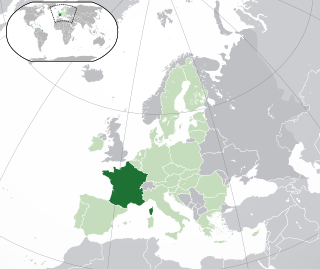
France is one of the five "Nuclear Weapons States" under the Treaty on the Non-Proliferation of Nuclear Weapons, but is not known to possess or develop any chemical or biological weapons. France is the only member of the European Union to possess independent (non-NATO) nuclear weapons. France was the fourth country to test an independently developed nuclear weapon, doing so in 1960 under the government of Charles de Gaulle. The French military is currently thought to retain a weapons stockpile of around 300 operational (deployed) nuclear warheads, making it the third-largest in the world, speaking in terms of warheads, not megatons. The weapons are part of the national Force de frappe, developed in the late 1950s and 1960s to give France the ability to distance itself from NATO while having a means of nuclear deterrence under sovereign control.

Moruroa, also historically known as Aopuni, is an atoll which forms part of the Tuamotu Archipelago in French Polynesia in the southern Pacific Ocean. It is located about 1,250 kilometres (780 mi) southeast of Tahiti. Administratively Moruroa Atoll is part of the commune of Tureia, which includes the atolls of Tureia, Fangataufa, Tematangi and Vanavana. France undertook nuclear weapon tests between 1966 and 1996 at Moruroa and Fangataufa, causing international protests, notably in 1974 and 1995. The number of tests performed on Moruroa has been variously reported as 175 and 181.
A nuclear-free zone is an area in which nuclear weapons and nuclear power plants are banned. The specific ramifications of these depend on the locale in question.
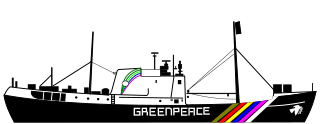
The sinking of Rainbow Warrior, codenamed Opération Satanique, was a state terrorism bombing operation by the "action" branch of the French foreign intelligence agency, the Directorate-General for External Security (DGSE), carried out on 10 July 1985. During the operation, two operatives sank the flagship of the Greenpeace fleet, Rainbow Warrior, at the Port of Auckland on her way to a protest against a planned French nuclear test in Moruroa. Fernando Pereira, a photographer, drowned on the sinking ship.
Greenpeace Aotearoa (GPAo) is one of New Zealand's largest environmental organisations, and is a national office of the global environmental organisation Greenpeace.

The Australia, New Zealand, United States Security Treaty is a 1951 non-binding collective security agreement initially formed as a trilateral agreement between Australia, New Zealand, and the United States; and from 1986 an agreement between New Zealand and Australia, and separately, Australia and the United States, to co-operate on military matters in the Pacific Ocean region, although today the treaty is taken to relate to conflicts worldwide. It provides that an armed attack on any of the three parties would be dangerous to the others, and that each should act to meet the common threat. It set up a committee of foreign ministers that can meet for consultation.

In 1987, the Fourth Labour Government passed the New Zealand Nuclear Free Zone, Disarmament and Arms Control Act. The Act essentially declared New Zealand as a nuclear free zone. The purpose of the Act was ambitious and wide-ranging: “to establish in New Zealand a Nuclear Free Zone, to promote and encourage an active and effective contribution by New Zealand to the essential process of disarmament and international arms control”.
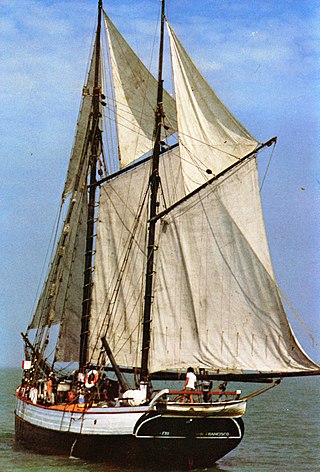
Fri, a New Zealand yacht, led a flotilla of yachts in an international protest against atmospheric nuclear tests at Moruroa in French Polynesia in 1973. Fri was an important part of a series of anti-nuclear protest campaigns out of New Zealand which lasted thirty years, from which New Zealand declared itself a nuclear-free zone which was enshrined in legislation in what became the New Zealand Nuclear Free Zone, Disarmament, and Arms Control Act 1987. In 1974, coordinated by Greenpeace New Zealand, the Fri embarked on a 3-year epic 40,233-kilometer "Pacific Peace Odyssey" voyage, carrying the peace message to all nuclear states around the world.
In 1984, Prime Minister David Lange banned nuclear-powered or nuclear-armed ships from using New Zealand ports or entering New Zealand waters. Under the New Zealand Nuclear Free Zone, Disarmament, and Arms Control Act 1987, territorial sea, land and airspace of New Zealand became nuclear-free zones. This has since remained a part of New Zealand's foreign policy.
Anti-nuclear organizations may oppose uranium mining, nuclear power, and/or nuclear weapons. Anti-nuclear groups have undertaken public protests and acts of civil disobedience which have included occupations of nuclear plant sites. Some of the most influential groups in the anti-nuclear movement have had members who were elite scientists, including several Nobel Laureates and many nuclear physicists.

Rainbow Warrior was a Greenpeace ship involved in campaigns against whaling, seal hunting, nuclear testing and nuclear waste dumping during the late 1970s and early 1980s. The Direction Générale de la Sécurité Extérieure bombed Rainbow Warrior in the Port of Auckland, New Zealand on 10 July 1985, sinking the ship and killing photographer Fernando Pereira.

The 1995 MTV Europe Music Awards took place at the Le Zénith in Paris, France and were hosted by Jean-Paul Gaultier.
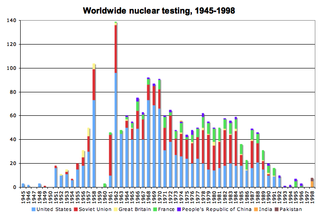
The application of nuclear technology, both as a source of energy and as an instrument of war, has been controversial.
Maire Leadbeater, is a New Zealand human rights and peace activist, writer, and former social worker. Leadbeater played a leading role in the New Zealand branch of the Campaign for Nuclear Disarmament and has also advocated on human rights issues relating to East Timor, the Philippines, and Indonesia. She also served as a councillor on the Auckland City Council and Auckland Regional Council.

The Treaty on the Prohibition of Nuclear Weapons (TPNW), or the Nuclear Weapon Ban Treaty, is the first legally binding international agreement to comprehensively prohibit nuclear weapons with the ultimate goal being their total elimination. It was adopted on 7 July 2017, opened for signature on 20 September 2017, and entered into force on 22 January 2021.
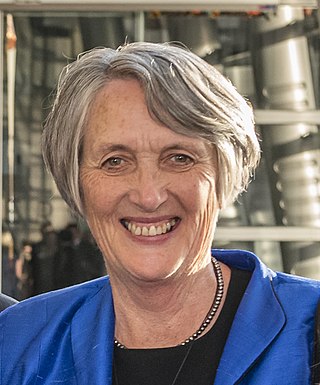
Catherine Frances Dewes is a New Zealand activist for disarmament and former advisor on peace matters to two United Nations Secretaries-General. She was appointed an Officer of the New Zealand Order of Merit in the 2001 New Year Honours, for services to the peace movement.
